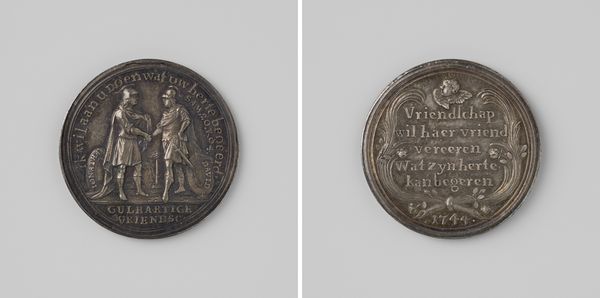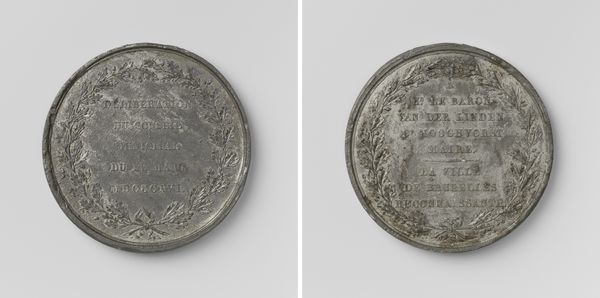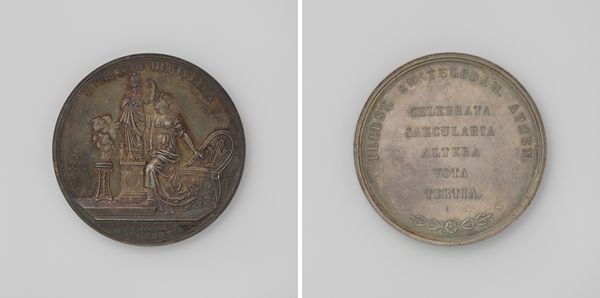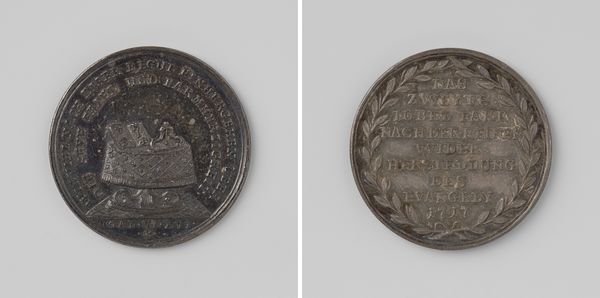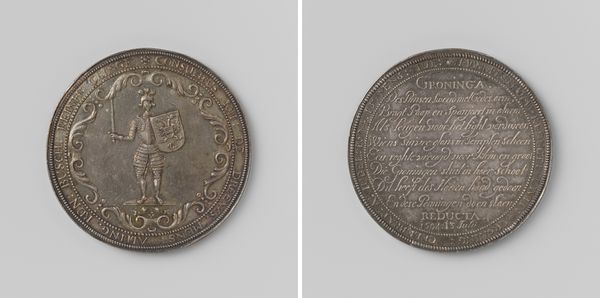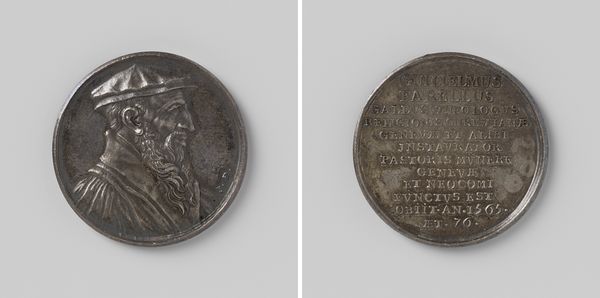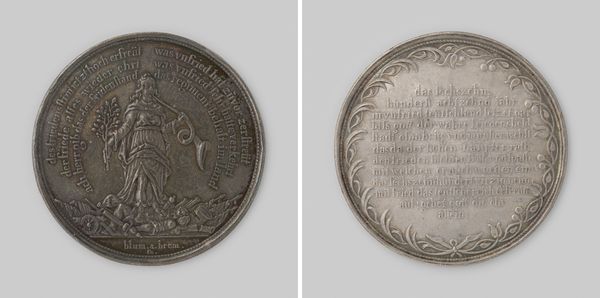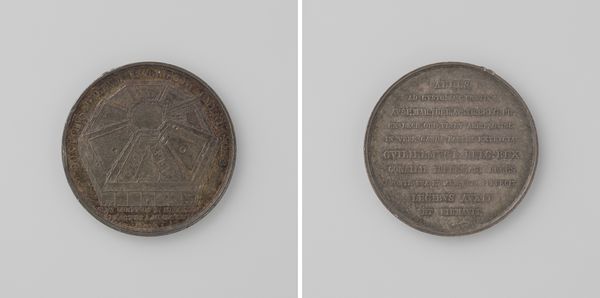
Slag bij Blenheim, ter ere van de hulptroepen, gezonden door Frederik IV van Denemarken 1704
0:00
0:00
metal, relief, sculpture
#
portrait
#
baroque
#
metal
#
sculpture
#
relief
#
sculpture
#
ceramic
#
statue
Dimensions: diameter 4.8 cm, weight 47.96 gr
Copyright: Rijks Museum: Open Domain
Curator: Well, hello there. Isn't this little coin fascinating? It’s a medal, "Slag bij Blenheim, ter ere van de hulptroepen, gezonden door Frederik IV van Denemarken", which roughly translates to "The Battle of Blenheim, in honor of the auxiliary troops sent by Frederick IV of Denmark", created back in 1704. Look closely; it appears to be crafted from metal, possibly silver. Editor: Hmm, initially I see this piece as... restrained. Given it commemorates a battle, I expected something overtly bombastic. But there's a certain stoicism in the relief. Curator: Restrained, yes, but it's teeming with symbolism! On one side, you have a figure – I perceive her as a representation of Denmark, perhaps? – receiving accolades from what looks to be an angel of sorts. Very classical. What strikes me is the deliberate composition, this almost theatrical tableau unfolding on such a minuscule stage. Editor: Absolutely, that angel feels posed. I’m interested in the physical crafting itself. This would've involved die-striking, most likely. Consider the immense pressure involved, the expertise needed to transfer such fine details onto the metal. Was this commissioned? Or produced for wider circulation? Who had access to these things? Curator: My hunch says it was a commission piece, perhaps for someone in Frederik IV's court. But zooming out, think about the cultural exchange! Danish assistance in a battle being commemorated, and the medal itself becoming an artifact traded and circulated… Imagine the hands it must have passed through! It's a tactile history lesson. Editor: And it brings up material value – silver, a resource extracted, traded, refined, and finally stamped with power. These weren’t mere souvenirs. It's about claiming legitimacy, cementing victory via material means that communicate beyond languages. This wasn’t simply struck to mark a moment in history. It’s the *process* of its creation that encoded power into it. Curator: You are so right; and that makes me reconsider that ‘restraint’ that struck you earlier; now I am realizing what appears stoic at first also suggests this powerful, resilient quality. Like Denmark enduring! What an insight! Editor: Seeing it as this material object shifts my sense of scale and historical scope. This prompts a more expansive awareness of making and its relationship with remembering the past.
Comments
No comments
Be the first to comment and join the conversation on the ultimate creative platform.



